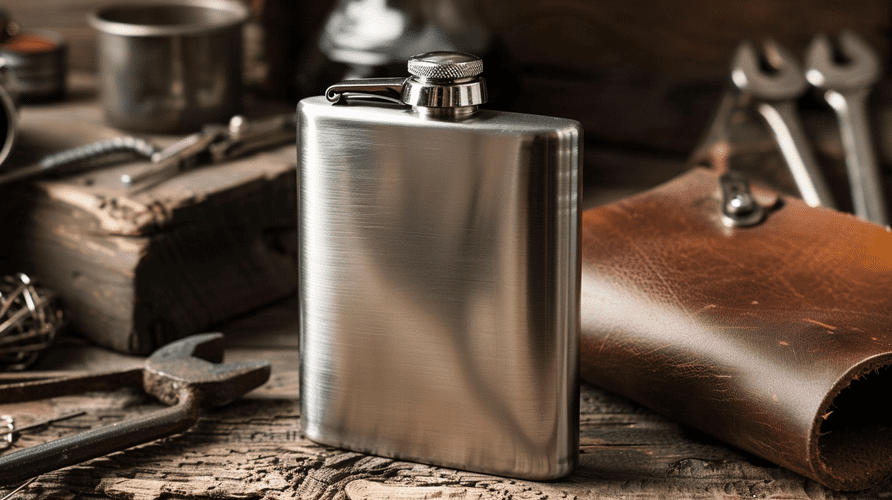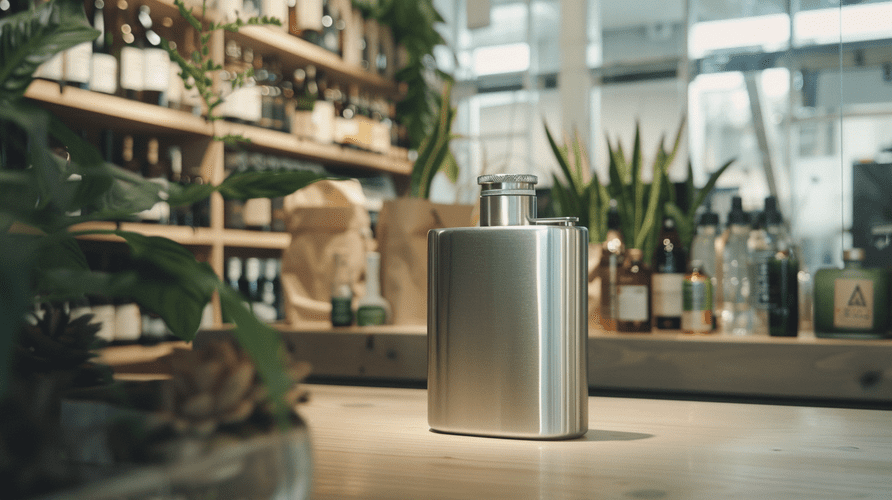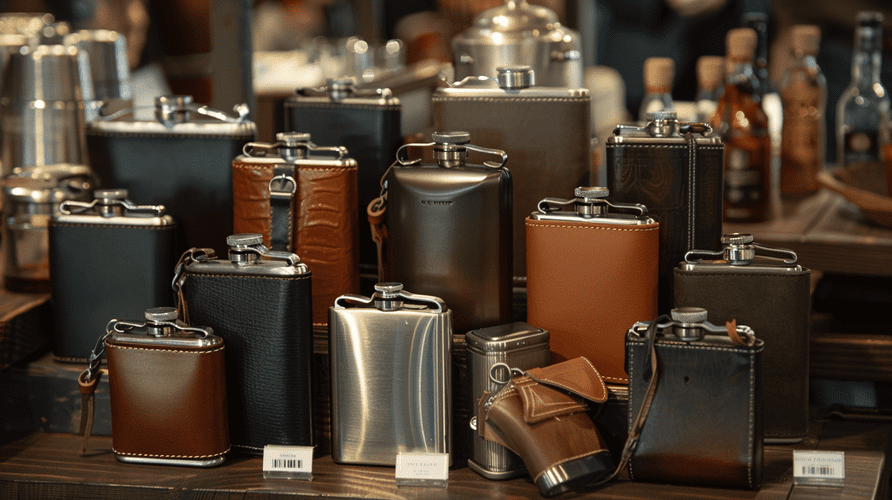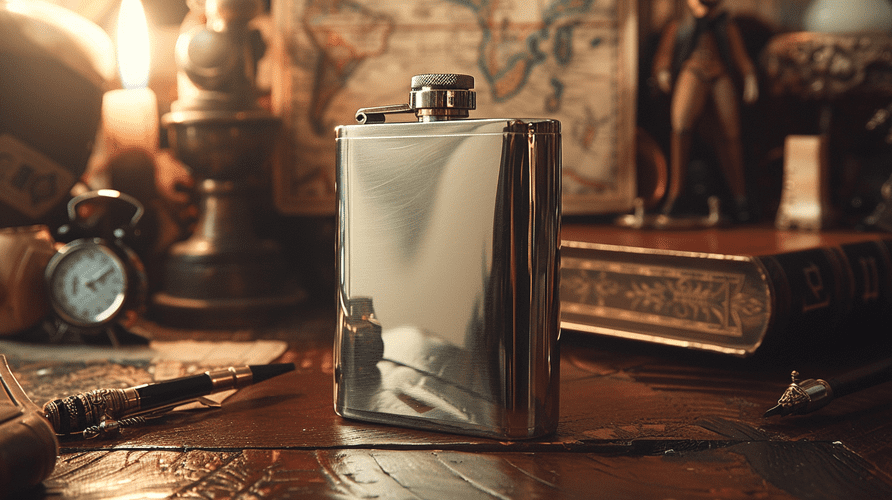Tired of low-quality flasks that leak and tarnish your brand's reputation? Sourcing reliable products feels like a gamble. I can show you the key details to look for.
To source the best hip flasks, focus on food-grade 304 stainless steel, lead-free construction, and a proven leak-proof cap design. Vet your supplier's quality control and customization capabilities, not just the final product. This ensures safety, durability, and brand integrity for your customers.

Getting the basics right is just the start. But the difference between a generic flask and a premium one is in the details. As a B2B buyer, knowing these details gives you an edge. It helps you ask the right questions and partner with the right supplier. Let's break down exactly what you need to look for.
What to Consider When Buying a Flask?
Worried about safety compliance and product recalls? Choosing the wrong materials can lead to legal trouble and ruin your brand's trust. Let's make sure that doesn't happen.
The most critical things to consider are material safety and construction quality. Insist on food-grade 304 (18/8) stainless steel, lead-free solder, and BPA-free seals1 that meet FDA or LFGB standards. Also, check for robust, leak-proof cap designs to prevent customer complaints.

When I work with clients, the first conversation is always about safety and materials. These are not areas where you can cut corners. Your brand's reputation and your legal compliance depend on it.
Material Grade is Non-Negotiable
You must insist on food-grade 304 stainless steel2, also known as 18/8 steel. This material is the industry standard for a reason. It is corrosion-resistant, so it won't rust. It's also taste-neutral, which means it won't make whiskey taste like metal. Some cheaper factories might use lower-grade steel like 201. This material can rust over time and is not considered food-safe for long-term liquid storage in many regions. Always ask for material certification from your supplier.
Safety Beyond the Steel
True safety involves more than just the flask's body. Many flasks are built using solder to join the pieces. You must verify that this solder is lead-free. Lead is highly toxic, and having it in a drinking vessel is a massive liability. Also, look at the cap's liner or seal. These should be made from BPA-free materials like silicone. This is essential for meeting regulations in your target markets, like FDA in the United States or LFGB in Europe. These certifications are not just paperwork. They are proof that your product is safe for consumers.
How to Pick a Flask?
Overwhelmed by supplier options and technical jargon? Picking the right flask feels complicated when every factory claims to be the best. I'll simplify the selection process for you.
Pick a flask by evaluating its construction. Look for clean, durable laser-welded seams instead of traditional soldering. Examine the cap mechanism for a secure fit, strong hinge, and a high-quality silicone seal3. A well-built flask feels solid and functions flawlessly from the start.

I once had a new client, Mark from Canada, come to me after a terrible experience. He had ordered a large batch of flasks from another supplier and nearly half of them leaked. His customers were angry, and he lost a lot of money. His mistake was that he only looked at the price, not the construction. A physically well-made flask prevents these kinds of disasters.
Inspecting the Body
The best way to join the parts of a flask body is with laser welding. This technique creates a very clean, strong, and seamless bond. It is far superior to older methods that use solder, which can sometimes leave messy seams or create weak points. When you inspect a sample, run your finger along the edges. They should feel smooth and uniform. The flask should have a good weight to it, indicating a proper wall thickness, not a thin and flimsy one. A well-made body is the foundation of a quality flask.
The Cap is King
The cap is the most common point of failure. A great flask must have a great cap. First, test the threading by opening and closing it. It should be smooth, not gritty or difficult to turn. If the flask has a captive cap (meaning it's attached), check the hinge. It should be robust and feel secure, not wobbly. Most importantly, check the seal inside the cap. A high-quality, flexible silicone gasket is best. It will create a tight seal to prevent leaks, which is the number one complaint from end-users.
How to Know a Good Flask?
Can you tell a premium flask from a cheap one at a glance? Your customers can. The finish and feel directly impact perceived value and your profit margins.
You know a good flask by its finish and feel. A premium flask has a consistent, flawless finish—be it brushed, polished, or coated. The weight feels substantial, not flimsy. The branding, like laser engraving, is crisp and precise, reflecting high attention to detail in manufacturing.

The perceived value of your product is created long before the customer ever fills it. It's about how it looks and feels in their hand. A high-quality finish and sharp, professional branding tell the customer that they bought a premium item. This is crucial for building a brand that people trust and are willing to pay more for.
Judging by the Finish
The surface finish is a major quality indicator. A basic polished or brushed stainless steel finish should be uniform, with no scratches or blemishes. For colored flasks, you want to see high-quality coatings.
| Finish Type | Description | Key Benefit |
|---|---|---|
| Brushed | A satin-like finish with fine lines. | Hides fingerprints and minor scratches well. |
| Polished | A mirror-like, shiny surface. | Looks very premium and classic. |
| Powder Coat | A durable, paint-like finish. | Very tough, resistant to chipping, wide color range. |
| PVD Coating | A very thin but extremely hard ceramic coating. | The most durable, premium, and scratch-resistant option. |
A supplier who offers a range of high-quality finishing options likely has better equipment and higher standards.
Customization as a Quality Indicator
How well a supplier can add your logo speaks volumes about their overall quality. A factory that produces crisp laser engraving or perfect multi-color screen printing has good processes in place. If a logo looks blurry, off-center, or messy, it's a huge red flag. It suggests they lack attention to detail, and you will likely find other quality issues in the product itself. Always ask for customized samples4 before placing a bulk order.
Which Brand Flask is Best?
Are you chasing big retail brands for your B2B sourcing? This is a common mistake. You're not buying for yourself; you're buying for your business and your brand.
For a B2B buyer, the question isn't "which brand is best?" but "which supplier is best?" Focus on the manufacturer's capabilities, not a consumer-facing brand name. The best supplier offers transparency, consistent quality control, reliable production capacity, and all necessary certifications for your market.

As a B2B buyer, you are not the end-consumer. You are the brand owner or the product manager. Your goal is to find a manufacturing partner5 who can consistently produce a high-quality product that represents your brand well. My company, Icobottle, doesn't sell to individual consumers. We partner with businesses like yours to create products they are proud to put their name on.
Shifting from Brand to Partner
Instead of looking for a familiar flask brand, you should be looking for a reliable manufacturing partner. This partner should understand your needs, especially if you sell in American or European markets. They need to have solid quality control systems6 to catch problems before the flasks ever leave the factory. They need to be transparent about their materials and processes. You are building a business relationship. This is far more important than the brand name on a retail shelf.
Key Questions for Your Supplier
When you talk to potential suppliers, you need to ask specific questions to see if they are a good partner. Don't just ask for a price. Go deeper.
- "Can you provide a material test report for 304 stainless steel?"
- "Can you provide your FDA or LFGB certificates?"
- "What is your standard procedure for leak-testing flasks?"
- "Can you show me a sample of laser engraving on a matte black powder-coated flask?"
- "What is your production capacity, and what is your average lead time for an order of 5,000 units?"
Their answers will tell you everything you need to know about their professionalism and capability.
What Improves the Quality of a Flask?
Think all stainless steel flasks are the same? Small upgrades in the manufacturing process can dramatically increase durability and customer satisfaction. Don't overlook these critical details.
Quality is improved by investing in better techniques and materials. Using laser welding for seams creates a stronger, cleaner bond. Opting for a thicker grade of 304 steel adds durability. High-quality PVD or powder coating provides a superior, long-lasting finish compared to simple paint.

Investing a little more upfront in better manufacturing often saves you money in the long run. It reduces the number of defective products, minimizes customer complaints, and builds a stronger brand reputation. The goal is to create a product that delights the end-user, and that starts with making smart choices during production. These choices are what separate an average flask from a great one.
Upgrading Key Features
Here is a simple breakdown of where small investments make a big impact on quality.
| Feature | Standard Quality | High-Quality Upgrade | Why It Matters |
|---|---|---|---|
| Welding | Standard soldering | Laser welding | Stronger, cleaner, much lower risk of leaks. |
| Coating | Simple spray paint | Powder coating or PVD | Far more durable, scratch-resistant, and premium feel. |
| Cap Seal | Basic plastic liner | Custom-fit silicone gasket | Creates a perfect, flexible seal to guarantee no leaks. |
| Steel Thickness | Standard gauge | Thicker gauge steel | Feels more substantial and resists dents better. |
Discussing these specific upgrades with your supplier shows that you are a knowledgeable buyer. It also ensures you get a final product that truly stands out in the market. A few cents more per unit for a silicone gasket or laser welding is a small price to pay to avoid the high cost of a bad reputation.
Conclusion
Sourcing great hip flasks means focusing on material safety, leak-proof construction, and a quality finish. Choose a manufacturing partner who can deliver consistently on these key points.
-
BPA-free seals are essential for health compliance. Learn about their importance in ensuring safe drinking experiences. ↩
-
Understanding food-grade 304 stainless steel is crucial for ensuring safety and quality in your products. Explore this link to learn more. ↩
-
Discover why a silicone seal is crucial for preventing leaks and ensuring the longevity of your flask. ↩
-
Learning about the significance of customized samples can prevent costly mistakes and ensure product quality meets expectations. ↩
-
Understanding the qualities of a reliable manufacturing partner can enhance your B2B sourcing strategy and ensure product quality. ↩
-
Exploring the role of quality control systems can help you choose suppliers that maintain high standards in production. ↩

